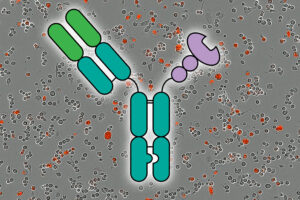
Imagine clothing that adapts to environmental changes, lunar habitats built from living organisms, and buildings grown from plants. These futuristic visions are closer to reality as Cornell University scientists delve into the mechanics of plant cell walls, aiming to engineer plants and other organisms into biodegradable, usable forms. The study, published on August 14 in Nature Communications, marks a significant step in understanding how cell walls control plant growth.
The research focuses on the model plant Arabidopsis thaliana, bridging plant biology and mechanical engineering. It investigates the mechanical properties of cell walls, such as their ability to stretch, rebound, and elongate without returning to their original form. This foundational knowledge is crucial for developing plants that can grow into specific shapes and sizes, potentially revolutionizing materials like biodegradable packaging.
Understanding Plant Growth Mechanics
“By understanding cell wall mechanics related to plant development, we may one day engineer plants to grow materials with desired shape and size,” said Si Chen, a postdoctoral fellow at the Engineered Living Materials Institute (ELMI) and the study’s first author. ELMI, which launched three years ago, is an interdisciplinary initiative that includes biologists, engineers, and architects focused on creating sustainable materials from living organisms.
Primary cell walls, which form the outer layer of plant cells, play a critical role during the growth phase, while secondary cell walls contribute to structural hardness once growth ceases. This study zeroes in on the growth stage, examining how much force is required to stretch the walls and how they thin out when elongated.
Innovative Experimental Designs
Chen developed experimental designs to measure the forces involved in stretching cell walls and how these walls behave under different conditions. “If we can engineer plants to change their form during their growth phase before laying down the secondary cell wall, we could create structures with desired hardness,” explained Adrienne Roeder, a professor in the School of Integrative Plant Science and a senior author of the study.
Chen also explored the developmental timeline of plants, analyzing how mechanical properties vary during rapid growth versus when growth slows or stops. Her research included testing a mutant Arabidopsis variant known as spiral 2, which twists as it grows, providing insights into how cell wall material is deposited in a spiraling pattern.
Modeling Cell Wall Architecture
To further understand mechanical behaviors, Chen created a simple model using five beams representing cellulose fibers, arranged in a diamond shape with a cross beam. This model helped illustrate how bending, reorienting, stretching, and slipping of beams, along with the connectors between them, contribute to the overall mechanical response.
“It’s the connections between these beams that are really critical,” Roeder emphasized. “It points us towards really focusing on those connector points when we engineer materials in the future.”
The study’s senior co-author, Meredith Silberstein, a professor in the Sibley School of Mechanical and Aerospace Engineering at Cornell, serves as the founder and director of ELMI. Roeder is the associate director. Other contributors include Isabella Burda, Purvil Jani, and Bex Pendrak, all affiliated with ELMI and various engineering departments at Cornell.
Implications for Sustainable Materials
The research, funded by ELMI, the National Institutes of Health, the National Science Foundation, and Chen’s Sam and Nancy Fleming Postdoctoral Fellowship, holds promise for the future of sustainable materials. By harnessing the natural growth processes of plants, scientists aim to create materials that are not only functional but also environmentally friendly.
As the world grapples with environmental challenges, the potential to grow materials directly from plants offers a compelling solution. This study lays the groundwork for future innovations that could redefine how we think about materials and their impact on the planet.
Looking ahead, the insights gained from this research could lead to breakthroughs in various fields, from architecture to fashion, as scientists continue to explore the possibilities of engineered living materials.





